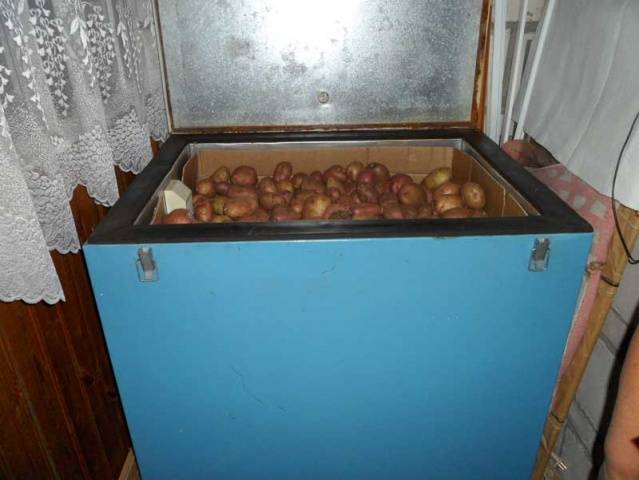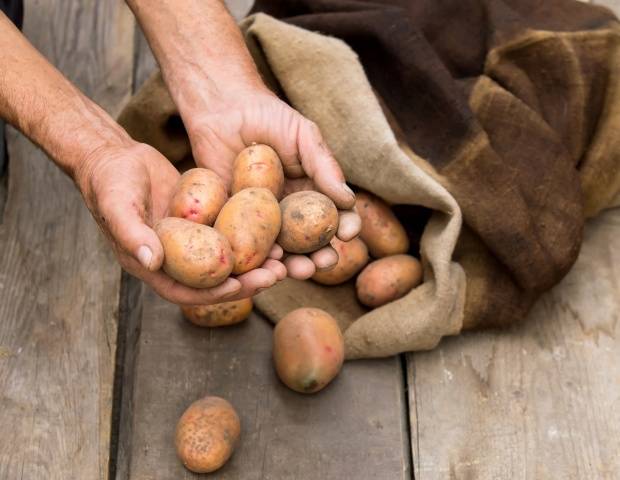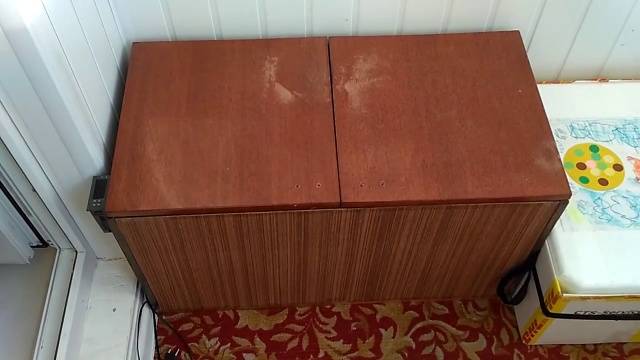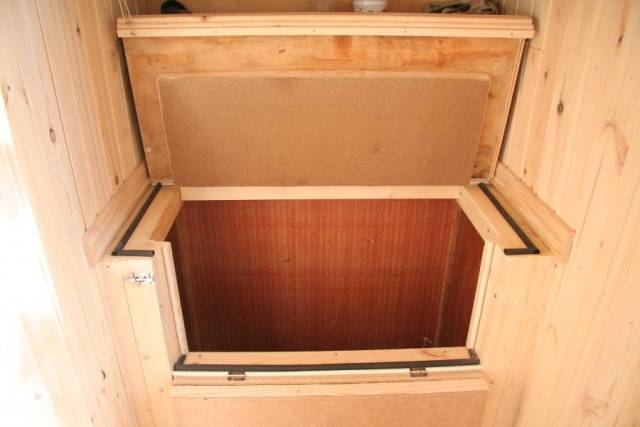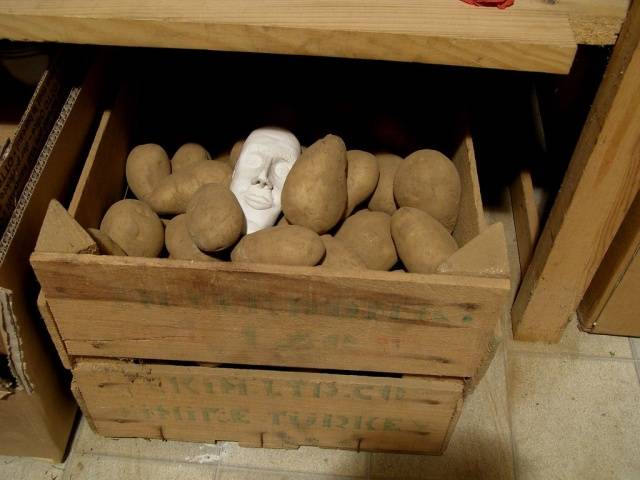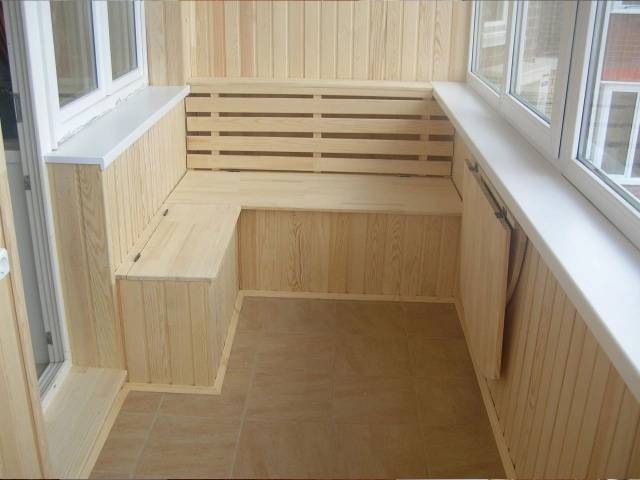Potatoes are an integral part of the daily diet of many families. Today you can find many recipes that use this vegetable. Moreover, for many this product becomes the main one in winter. Taking this into account, potatoes are purchased and stored throughout the cold period. But what if you live in an apartment building and you don’t have a cellar, barn, etc.? In this case, there is an original solution - storing potatoes on the balcony. This allows you to have this much-desired vegetable all winter and prepare a wide variety of dishes. However, to store potatoes on the balcony in winter, it is necessary to create appropriate conditions, especially if your balcony is not heated. In this article we will tell you how many apartment residents got out of the situation.
Proper storage
To store potatoes in winter, you need to harvest them in dry and warm weather. It is also a mandatory requirement to dry all tubers outdoors in the shade. During the drying process, exposure to direct sunlight is unacceptable. The next step is to sort the potatoes. If diseased or damaged tubers are found, set them aside. Use these potatoes for food first.
As for the method of storing potatoes on the balcony, you need to make some kind of chest or container. You can make it yourself from a wooden frame and sheathe it with special material. Regardless of the chosen storage method, good ventilation is provided on the balcony. Without a change of air, potatoes will wither and spoil very quickly. Among other things, ventilation should maintain relatively stable humidity on the balcony, around 40%.
If you made a container for storing potatoes on the balcony yourself, then it should be insulated. Polystyrene foam is usually used as a thermal insulation material. Thick foil insulation is often used. It creates the effect of a thermos. A lattice must be placed inside the manufactured box. This will create an air gap.
But what if your balcony or loggia is not heated in winter? In this case, you will have to carry out a series of works aimed at creating heating. At the very least, it is necessary to reliably insulate the balcony itself. If it is not glazed, then be sure to install window frames. For heating, some home craftsmen use large incandescent lamps. You don't have to leave them on all day, just a few hours is enough. If you take all these steps, you will be able to provide the potatoes with proper storage conditions.
How to make a storage
You can arrange a storage facility that will ensure reliable storage of potatoes on the balcony yourself. Let's consider several options. If you plan to store potatoes on the balcony in winter for subsequent years, then you can use wooden blocks and clapboard to make the box. Line the inside of the box with foil or other reflective material. Buy polystyrene foam as a thermal insulator. The use of these materials will ensure reliable storage of potatoes during severe winter frosts.
It is important to prevent direct contact of potatoes with concrete, brick and other similar surfaces. Because of this, it may begin to turn black and rot. Therefore, a bottom shelf must be installed in the box being manufactured. It turns out that you should have a space between the floor and the bottom shelf.
Potato storage box on the balcony in winter you can do it with vertical loading. This is very practical especially for those who have a small balcony. For example, a box can be narrow but tall. Taking this into account, a lid will be placed on top. The lid must also be insulated. Additionally, it can be covered with a durable blanket.
If the balcony or loggia is spacious, then a box for storing potatoes on the balcony in winter can be combined with a seat. For example, make a rectangular box, attach the back to it, and fill the lid with soft foam rubber on the top side. This way, you will immediately have two useful things on your balcony - a box for storing potatoes in winter and a place to relax.
Another option is to make a heated chamber.This solution will especially please those whose balcony is not insulated, and you live in a region of Russia where severe and prolonged frosts are experienced. In this case, it means making the same box, only with heating. To do this, you need to make 2 boxes of different sizes, one larger, the other smaller. This is necessary to make the outer and inner chambers. A thermal insulator will be laid between them, for example, construction foam, polystyrene foam, etc. Sawdust is poured into a tray that does not allow the potatoes to have direct contact with the base, cardboard, polystyrene foam or rags are placed. A wire must be placed inside the box to connect a regular light bulb. Over the course of one day, the light is turned on to heat the potatoes for 5 hours.
With this method, you won’t spend much electricity, but your potatoes will be dry and in a warm place in winter. Some home craftsmen have used a hairdryer instead of regular light bulbs. A stream of warm air will quickly increase the required temperature.
You can also use plastic or wooden boxes for winter storage. Stack boxes of potatoes one on top of the other. Their advantage is that they allow air to pass through. To protect against frost, cover the top of the vegetable boxes with a warm cotton blanket.
Using wooden or plastic boxes is the simplest solution. Plus, it is the most expensive.Also, you don’t need to waste time making them, because the boxes can be bought ready-made. However, this method is least effective if your area experiences severe frosts. Just a cotton blanket will not protect potatoes from frost. For this reason, before choosing one storage method or another, consider the following points:
- Consider not only your financial capabilities, but also climatic conditions.
- Also be sure to consider the size of the balcony or loggia. This will allow you to determine in advance how much potatoes can be stored during the winter season.
- Available materials and thermal insulation material.
- Is it possible to organize heating in your balcony?
- How well is the balcony insulated?
Conclusion
So, if you are a potato lover and this vegetable is one of the main ones in winter, then there is a solution. Even if you live in an apartment, you can use the space on the balcony for winter storage. We hope that this material helped you understand this issue, and also gave you food for thought on how exactly to arrange a place to store potatoes on your balcony in winter. Additionally, we invite you to watch an introductory video.
